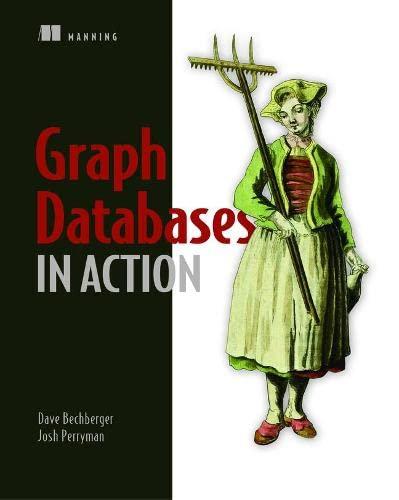Question
Java - data structures P3 Design an algorithm that produces a binary expression tree from a given infix expression. You can assume that the infix
Java - data structures
P3
Design an algorithm that produces a binary expression tree from a given infix expression. You can assume that the infix expression is a string that has only the binary operators +, -, *, / and one-letter operands. Implement the solution as a construction in ExpressionTree that takes a string argument:
public ExpressionTree(String infix)
that calls the private method
private ExpressionTreeInterface formTree(String expr, int first, int last)
to construct the tree. formTree() builds the tree recursively.
ExpressionTree.java
public class ExpressionTree extends BinaryTree
return result; } // end evaluate private double getValueOf(String variable) { // strings allow multicharacter variables double result = 0; if (variable.equals("a")) result = 1; else if (variable.equals("b")) result = 2; else if (variable.equals("c")) result = 3; else if (variable.equals("d")) result = 4; else if (variable.equals("e")) result = 5; return result; } // end getValueOf
private double compute(String operator, double firstOperand, double secondOperand) { double result = 0; if (operator.equals("+")) result = firstOperand + secondOperand; else if (operator.equals("-")) result = firstOperand - secondOperand; else if (operator.equals("*")) result = firstOperand * secondOperand; else if (operator.equals("/")) result = firstOperand / secondOperand; return result; } // end compute } // end ExpressionTree
Incase if you need Binarytree and Binarynode
BinaryTree.java
//package TreePackage; import java.util.Iterator; import java.util.NoSuchElementException; import java.util.Stack ; // for Stack
public class BinaryTree { protected BinaryNode root; public BinaryTree() { root = null; } // end default constructor public BinaryTree(T rootData) { root = new BinaryNode(rootData); } // end constructor
public BinaryTree(T rootData, BinaryTree leftTree, BinaryTree rightTree) { privateSetTree(rootData, leftTree, rightTree); } // end constructor
public void setTree(T rootData) { root = new BinaryNode(rootData); } // end setTree public void setTree(T rootData, BinaryTree leftTree, BinaryTree rightTree) { privateSetTree(rootData, leftTree, rightTree); } // end setTree
private void privateSetTree(T rootData, BinaryTree leftTree, BinaryTree rightTree) { root = new BinaryNode(rootData);
if (leftTree != null) root.setLeftChild(leftTree.root); if (rightTree != null) root.setRightChild(rightTree.root); }
public T getRootData () { T rootData = null; if (root != null) rootData = root.getData(); return rootData; } public boolean isEmpty () { return root == null; } public void clear (){ root = null; } // getHeight and getNumberOfNodes call same functions in BinaryNode public int getHeight () { return root.getHeight (); } public int getNumberOfNodes () { return root.getNumberOfNodes (); } public void inorderTraversal() { Stack> nodeStack = new Stack>(); BinaryNode currentNode = root; while (!nodeStack.empty() || currentNode != null) { while(currentNode != null) { nodeStack.push(currentNode); currentNode = currentNode.getLeftChild(); } if(!nodeStack.empty()) { BinaryNode nextNode = nodeStack.pop(); System.out.println(nextNode.getData()); currentNode = nextNode.getRightChild(); } } } public Iterator getPreorderIterator() { return new PreorderIterator(); } public Iterator getInorderIterator() { return new InorderIterator(); } private class PreorderIterator implements Iterator { private Stack> nodeStack; public PreorderIterator() { nodeStack = new Stack>(); if (root != null) nodeStack.push(root); } // end default constructor public boolean hasNext() { return !nodeStack.isEmpty(); } // end hasNext public T next() { BinaryNode nextNode; if (hasNext()) { nextNode = nodeStack.pop(); BinaryNode leftChild = nextNode.getLeftChild(); BinaryNode rightChild = nextNode.getRightChild(); // push into stack in reverse order of recursive calls if (rightChild != null) nodeStack.push(rightChild); if (leftChild != null) nodeStack.push(leftChild); } else { throw new NoSuchElementException(); } return nextNode.getData(); } // end next public void remove() { throw new UnsupportedOperationException(); } // end remove } // end PreorderIterator private class InorderIterator implements Iterator < T > { private Stack< BinaryNode< T >> nodeStack; private BinaryNode< T > currentNode; public InorderIterator () { nodeStack = new Stack < BinaryNode< T>> (); currentNode = root; } // end default constructor
public boolean hasNext () { return !nodeStack.isEmpty () || (currentNode != null); } // end hasNext
public T next () { BinaryNode< T > nextNode = null; // find leftmost node with no left child while (currentNode != null) { nodeStack.push (currentNode); currentNode = currentNode.getLeftChild (); } // end while // get leftmost node, then move to its right subtree if (!nodeStack.isEmpty ()) { nextNode = nodeStack.pop (); currentNode = nextNode.getRightChild (); } else throw new NoSuchElementException (); return nextNode.getData (); } // end next public void remove () { throw new UnsupportedOperationException (); } // end remove
} // end InorderIterator } // end BinaryTree
BinaryNode.java
//package TreePackage; class BinaryNode
public BinaryNode() { this(null); // call next constructor } // end default constructor
public BinaryNode(T dataPortion) { this(dataPortion, null, null); // call next constructor } // end constructor
public BinaryNode(T dataPortion, BinaryNode
public T getData() { return data; } // end getData
public void setData(T newData) { data = newData; } // end setData
public BinaryNode
public void setLeftChild(BinaryNode
public boolean hasLeftChild() { return left != null; } // end hasLeftChild
public boolean isLeaf() { return (left == null) && (right == null); } // end isLeaf public BinaryNode
public void setRightChild(BinaryNode
public boolean hasRightChild() { return right != null; } // end
public int getHeight() { return getHeight(this); // call private getHeight } // end getHeight private int getHeight(BinaryNode
if (left != null) newRoot.left = left.copy(); if (right != null) newRoot.right = right.copy(); return newRoot; } // end copy } // end BinaryNode
Step by Step Solution
There are 3 Steps involved in it
Step: 1

Get Instant Access to Expert-Tailored Solutions
See step-by-step solutions with expert insights and AI powered tools for academic success
Step: 2

Step: 3

Ace Your Homework with AI
Get the answers you need in no time with our AI-driven, step-by-step assistance
Get Started


